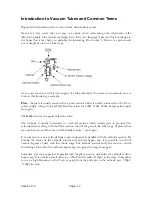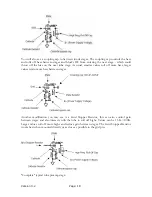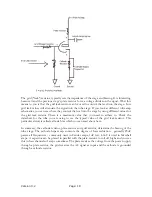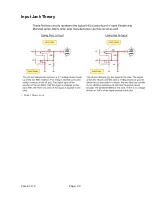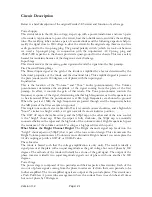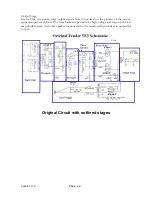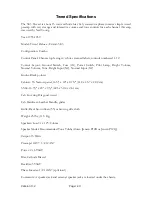
Version 3.2
Page: 8
Guitar Amplifier Basics
Electric guitarists can be fairly criticized for their reluctance to change to new ideas and
technologies; however, there is no doubt that a classic 1950’s guitar and tube amplifier in
good condition still sounds great in modern recordings. This is a testament to good design
from the start. What has improved today is consistency, and the cost benefits of production
line manuFacture. This is offset by the rarity of good guitar wood (it makes a huge
difference, even on an electric guitar), increased labour costs for both guitars and
amplification equipment, and the availability of good and consistent quality tubes.
There is also an element of nostalgia, with memories of many of the great players of years
gone by, and the desire to use the same types of instruments and equipment to recapture the
magic. Vintage instruments and equipment have also become valuable collectors items (some
with very inflated prices) which adds further to the desirability of older tools of the trade.
There has been a recent trend by many companies to re-market their original instruments
a
nd equipment; new guitars can even be bought now ‘pre
-
aged’!
This desire for vintage equipment is also related to guitarists’ reluctance to part with tube
amplification, and there are many reasons why tube and solid state amplifiers behave
differently. Quite simply, if players prefer the sound of tubes, they will continue to buy and
use them. Here are some fundamentals.
Input Impedance
Typically 1M, 500K minimum (humbucking pickup guitars have volume
pots up to 500K, single coil pickup guitars typically of 250K) .
Tone Controls
Magnetic guitar pickups are inductive, and require compensation, although this
opportunity is also used for tone enhancement, not just correction. Without compensation,
they have a strong low middle emphasis and little high frequency response - overall a very
muddy and muFfled sound. This is why typical hi-fi Baxandall treble & bass controls are
unsuitable.
To hear the natural sound of a pickup, use a typical guitar amp with the middle set to full,
and bass and treble on 0. This is actually sets a flat response in the amp (see below). Expect
to hear a muFfled and muddy sound. And that's the whole point of these tone controls
providing compensation for the natural sound of a pickup - the middle control simply
boosts the pickup's nor
mal ‘middley’ sound.
The treble and bass controls do the opposite -
they boost higher and lower frequency levels, leaving a notch in-between for middle cut (see
the Fender/Marshall comparison below). So with typical settings of a bit of bass, middle and
treble, the overall tone equalization complements the natural pickup sound for a balanced
response of lows, mids and highs.
Summary of Contents for Trinity Tweed Amp
Page 2: ...Version 3 2 Page 2 ...
Page 16: ......
Page 20: ...Version 3 2 Page 20 Input Jack Theory from 18watt com ...
Page 25: ...Version 3 2 Page 25 ...
Page 49: ...Version 3 2 Page 49 ...
Page 65: ...Version 3 2 Page 65 HEYBOER OT for TWEED 6L6GT CONVERSION ...
Page 66: ...Version 3 2 Page 66 ...
Page 75: ...Version 3 2 Page 75 ...
Page 76: ...Version 3 2 Page 76 ...
Page 77: ...Version 3 2 Page 77 Trinity Amps Schematics and Layouts ...

















